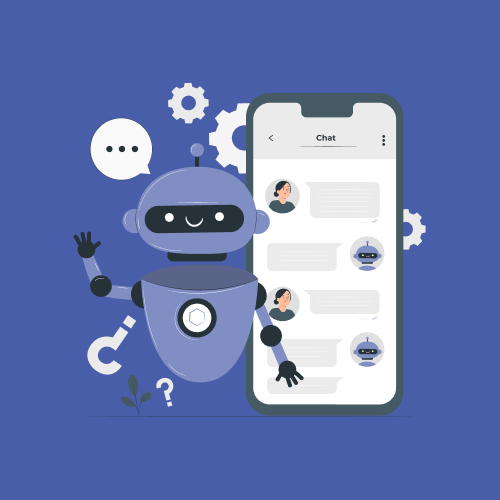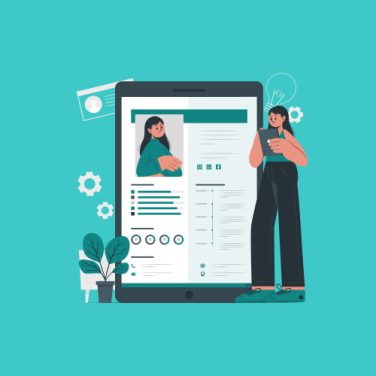As businesses navigate an increasingly digitised landscape, HR chatbots emerge as pivotal tools in modern HR processes.
These AI-powered assistants revolutionise how companies handle HR inquiries and tasks. From answering frequently asked questions to facilitating efficient onboarding, HR chatbots are gradually becoming indispensable in enhancing productivity, engagement, and overall workplace efficiency.
Choosing the best HR chatbots involves evaluating them based on several critical factors:
- AI capabilities: Sophisticated chatbots leverage advanced AI to provide personalised interactions, ensuring seamless communication and problem-solving.
- Integration flexibility: The ability to integrate effortlessly with existing business systems is crucial. This ensures that chatbots contribute positively to current workflows without disruption.
- User interface: An intuitive and user-friendly interface enhances employee engagement by making interactions smoother and more efficient.
- Data security: With increasing privacy concerns, robust security features are essential for protecting sensitive employee and company information.
The selection criteria for top HR chatbots also consider how they transform HR operations through HR analytics, offering insights that drive strategic decisions. As you delve into selecting the appropriate chatbot, understanding these criteria ensures you pick a solution aligned with your organisational needs.
Key factors to consider

In the rapidly evolving landscape of HR technology, selecting the right HR chatbot can significantly impact a company’s operational efficiency and employee engagement.
It is crucial to consider key factors such as AI capabilities, ease of integration, user interface, and additional functionalities.
Each chatbot offers unique strengths. Choosing the best HR chatbot involves aligning the chatbot’s features with organisational needs.
Incorporating HR chatbots into workplace processes is significantly altering the dynamics of employee engagement. With capabilities ranging from handling routine requests to providing real-time analytics, these AI-driven assistants are more than just problem solvers; they are central to fostering an inclusive and engaging work environment.
One of the standout features of these top HR chatbots is their ability to streamline HR requests and approvals. By automating these processes, chatbots dramatically cut down on approval times, making employees happier and more productive.
Employee engagement receives a notable boost through the personalised interactions these chatbots foster. By leveraging AI, chatbots provide instantaneous responses and support at any time of the day, ensuring that employee concerns and questions are addressed promptly.
This 24/7 availability is particularly advantageous in nurturing an environment where employees feel heard and supported, regardless of their location or time zone.
HR analytics
HR analytics play a critical role in the enhancement of engagement facilitated by these chatbots. By transforming workplace analytics, chatbots can transform your workplace into a data-rich environment that promotes informed decision-making.
Features like those offered by MiHCM utilise deep learning for advanced insights and help organisations understand engagement patterns, diversity, and productivity, aiding in crafting strategies that resonate with employee needs.
Ultimately, leading HR chatbots are pivotal in driving employee engagement by simplifying processes, making insights accessible, and ensuring expanded support, creating an environment conducive to job satisfaction and organisational success.
In the realm of human resources, recruitment and onboarding are vital processes that can benefit immensely from the capabilities of top HR chatbots. These AI-driven assistants not only streamline these procedures but also transform the overall candidate experience and integration process, making them an invaluable asset for organisations seeking to enhance efficiency and engagement.
When evaluating top HR chatbots, it’s essential to understand both their advantages and disadvantages to make an informed decision. While these AI-driven tools revolutionise human resources, bringing about significant efficiency and cost savings, they also come with certain limitations.
Advantages
- Efficiency and cost savings: HR chatbots automate repetitive tasks such as recruitment and onboarding, reducing the workload on HR teams and allowing them to focus on strategic initiatives. This leads to significant cost savings.
- 24/7 availability: Offering round-the-clock assistance, chatbots ensure that employee inquiries are addressed promptly, enhancing employee engagement and satisfaction.
- Improved decision-making: By leveraging HR analytics, chatbots provide valuable insights that aid HR professionals in making informed decisions, transforming how data is utilised within organisations.
Disadvantages
- Privacy concerns: A common challenge with chatbots is ensuring the secure management of sensitive employee information. Data privacy remains a paramount concern for businesses integrating these solutions.
- Limited capabilities: Despite advances in AI, chatbots may not fully replicate the nuanced understanding and empathy of a human HR professional, which can be a drawback in complex situations.
- Technical glitches: As with any technology, chatbots can face issues such as incorrect data processing or system downtime, impacting their reliability and performance.
While leading HR chatbots offer robust capabilities that streamline HR operations, organisations need to weigh these benefits against their limitations carefully. Successfully integrating these AI solutions into HR departments involves balancing the potential for automation with the necessity of maintaining human interaction, ensuring both efficiency and a supportive organisational culture.
Boosting productivity and employee satisfaction

As organisations across various industries strive to optimise their human resources processes, the integration of HR chatbots has proven to be a game-changer for enhancing productivity and employee satisfaction. These AI-powered tools have seamlessly integrated into workflows, offering practical solutions and measurable success.
While technical challenges exist, organisations that have embraced HR chatbot technology, such as those mentioned, demonstrate the tangible benefits in productivity and employee satisfaction.
By addressing initial integration issues and investing in robust AI capabilities, businesses can utilise these tools to transform their HR efforts effectively, paving the way for a more engaging and productive workplace environment.
Transforming workplace dynamics
The advancement of HR chatbots marks a significant evolution in technology’s role in transforming workplace dynamics. As 2025 approaches, we anticipate further enhancements in both functionality and user interaction. This progress promises more personalised employee experiences and improved operational efficiency.
One of the key trends is the integration of more sophisticated AI capabilities. Advanced HR chatbots are expected to use deep learning and natural language processing to better understand and predict employee needs. This evolution will likely enable chatbots to offer more nuanced support and guidance, transforming how companies manage their human resources.
Furthermore, businesses are placing increased emphasis on data security and privacy safeguards. Given the sensitive nature of HR data, ensuring robust security measures will remain a priority. This focus is crucial for maintaining trust and compliance with regulatory standards, even as chatbots become more integral to HR processes.
The integration of HR chatbots into broader HR analytics frames a future where AI not only supports daily tasks but also provides strategic insights. By leveraging vast amounts of organisational data, these chatbots can generate actionable insights, aiding in decision-making processes that directly influence workplace culture and productivity.
As we look forward, businesses would do well to stay abreast of these developments. Adopting cutting-edge solutions, such as the MiHCM suite, enables enterprises to remain competitive and responsive to changing employee engagement needs. These tools will play a pivotal role in creating more efficient and employee-centric HR operations.
Ultimately, the future of HR chatbots holds great promise for enhancing the employee experience and operational effectiveness. By embracing these technologies, businesses position themselves to adapt to the evolving demands of modern work environments, ensuring they can meet the engagement and efficiency needs of their workforce.
Frequently Asked Questions
What criteria should be used to evaluate the best HR chatbots?
How do HR chatbots handle data security
What are common concerns about employee acceptance of HR chatbots?
How can companies optimise chatbot functionality?
To optimise, continuously update the chatbot’s knowledge base, monitor performance through user feedback, and tailor the AI algorithms to suit specific organisational needs. Regular training and customisation can significantly enhance chatbot efficiency.



